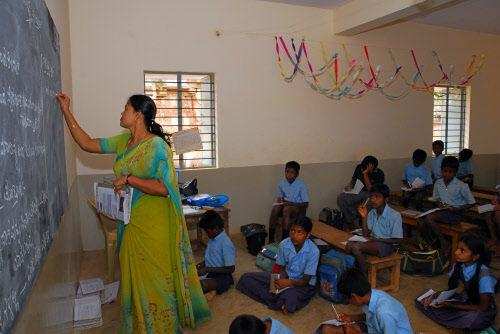Despite the fact that the Right to Education Act requires a minimum of two teachers in every school, single-teacher schools continue to exist in India, notably in Jharkhand. The presence of such schools poses enormous issues, undermining educational quality and depriving children of their entitlement to an adequate education. The concerning status of single-teacher schools draws attention to recent discoveries and emphasises the importance of taking immediate action to address this issue.

The plight of India’s single-teacher schools
- Despite the fact that the Right to Education Act has been in effect for 14 years, the number of single-teacher schools in India remains high at 14.7%.
- In Jharkhand alone, approximately one-third of elementary schools have a single teacher, which has a substantial impact on educational quality.
- While Jharkhand ranks low, a few states, like Andhra Pradesh (34%), Telangana (30%), and Karnataka (29%), have a similar or even greater proportion of single-teacher schools.
- The proportion of pupils studying in single-teacher schools exceeded 10% in nine of India’s 21 major states, reaching 25% in Jharkhand.
- Gloom in the Classroom, a recent report, throws light on the gravity of the situation in Jharkhand.
Reasons for the presence of single-teacher schools in several states
- Scattered Settlements and Low Population Density: It is difficult to build many schools in close vicinity in states with low population density and scattered settlements, such as Himachal Pradesh. Multiple teachers in such places are economically unviable due to limited resources and logistical constraints. As a result, single-teacher schools are frequently the only viable choice for providing education to children in outlying areas.
- Low Fertility Rates: Low fertility states, such as Himachal Pradesh and Kerala, may have fewer students in school. In many circumstances, single-teacher schools are a more efficient and cost-effective way to service a lower student population. Consolidating pupils into larger schools may not be practical or necessary when there are fewer students.
- Mini-School Viability: Single-teacher schools are a result of the viability and historical existence of mini-schools in several states. Prior to the implementation of the Right to Education Act, mini-schools were constructed in sparsely inhabited areas. Some states, such as Kerala, have successfully merged mini-schools, while others maintain single-teacher schools as separate institutions.
- Staffing Issues and Budget limits: When faced with staffing issues and budget limits, state governments may choose to understaff schools in underserved areas, resulting in the preponderance of single-teacher schools. Staffing concerns are exacerbated by limited resources and difficulties in recruiting and keeping teachers, particularly in distant or economically challenged areas.
- Resistance to Remote Postings: Because remote places frequently lack basic amenities and infrastructure, it can be difficult for instructors to acclimatise to such surroundings. Reluctance to accept posts in remote areas might result in a teacher shortage, resulting in single-teacher schools as a temporary solution.
Measures to address the difficulties associated with single-teacher schools
- Resources and infrastructure: Adequate infrastructure investment, particularly the construction of more classrooms, is required to accommodate more teachers while reducing the pressure on existing personnel. Providing adequate teaching resources, such as textbooks, learning materials, and technology tools, to schools helps improve the teaching-learning process.
- Recruitment and Retention: State governments must prioritise the recruitment of skilled teachers in order to provide an adequate number of professionals in underserved areas. Encouraging and rewarding instructors to accept remote postings can assist overcome objections to such assignments.
- Policy Reforms: The Right to Education Act must be strictly enforced, with a minimum of two teachers required in each school. State governments should set aside appropriate funding to satisfy staffing requirements and ensure compliance with the statute. Policy reforms should prioritise equity and inclusivity, with a focus on marginalised areas and ensuring all children have access to a high-quality education.
- Community Engagement: It is critical to raise awareness among parents and communities about the value of education and the impact of single-teacher schools. Encouraging community participation in school management committees and encouraging collaboration among schools, parents, and local organisations can help to drive collaborative efforts to improve the educational environment.
The Next Step: Reviving the Education Movement
- It is critical to rekindle the momentum for the right to education that once rang throughout the country.
- A revitalised movement is required to campaign for quality education, raise awareness about ongoing issues, and hold authorities accountable for ensuring children’s right to education.
- The recent Jharkhand protests, which exposed the unmet demand for quality education, serve as a reminder of the critical importance of addressing the situation of single-teacher schools.
@the end
The prevalence of single-teacher schools in Jharkhand and other states demonstrates a systemic failure to realise the right to an education. Immediate action is needed to improve infrastructure, hire skilled teachers, make policy reforms, and encourage community involvement. We can ensure that every kid has access to a quality education and the opportunity to develop by prioritising education and tackling the issues associated with single-teacher schools.
Source: https://www.newindianexpress.com/thesundaystandard/2016/jun/19/Plight-of-education-Almost-1.5-lakh-schools-in-India-are-run-by-single-teacher-942027.html
